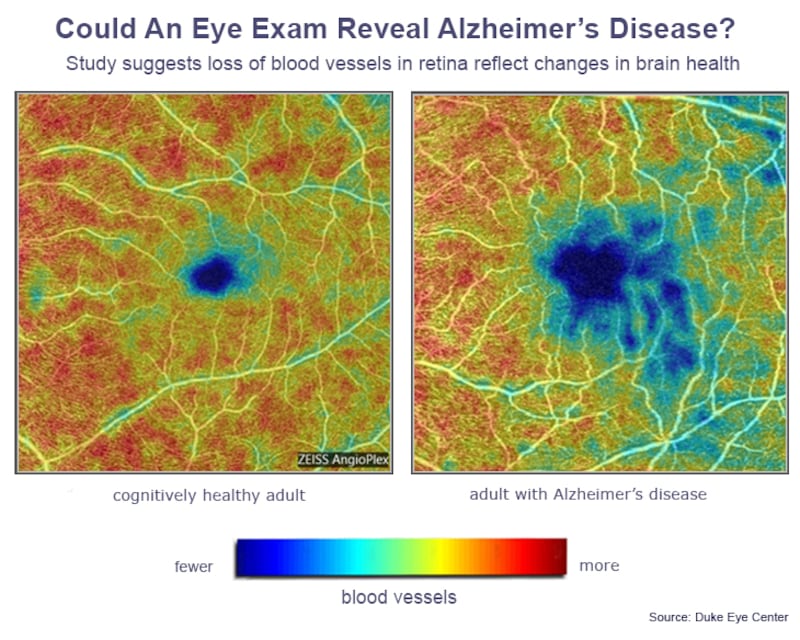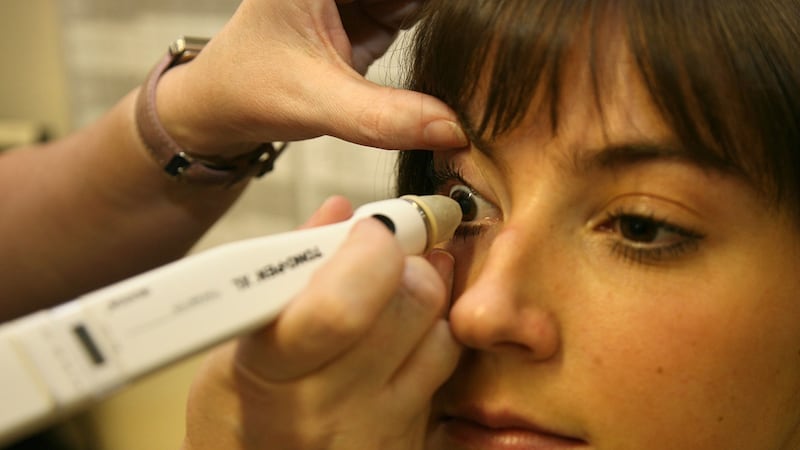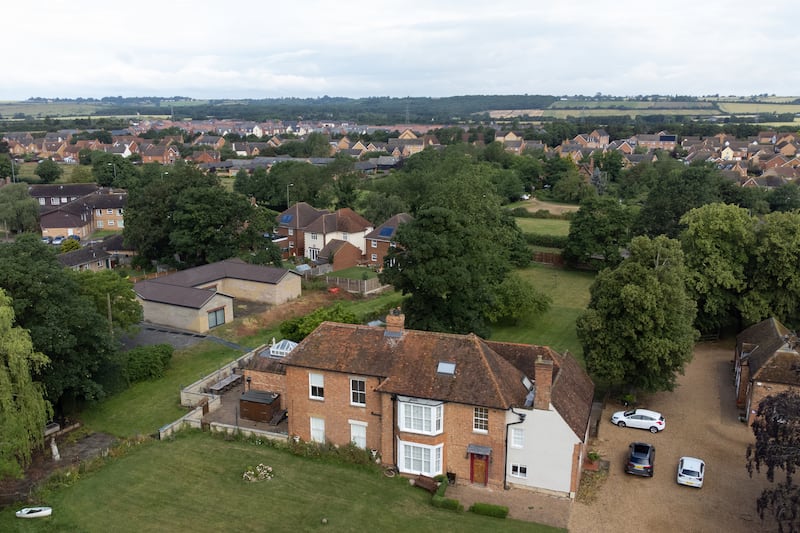A new eye test could be used to spot early signs of Alzheimer’s disease, research suggests.
The test, which highlights microscopic blood vessels at the back of the eye, has the potential to detect the disease before symptoms appear, scientists claim.
Experts agree that early diagnosis of Alzheimer’s is vital to the effectiveness of therapies aimed at slowing, halting or reversing the disease.

An early study found that tiny blood vessels that normally form a dense web at the back of the eye become sparser in Alzheimer’s patients.
The differences seen were statistically significant after adjusting for factors such as age, sex and education.
The new research raises the prospect of opticians with access to the technology checking brain health at the same time as they update spectacle prescriptions.
Dr Sharon Fekrat, from Duke University Medical Centre in the US, said: “We’re measuring blood vessels that can’t be seen during a regular eye exam and we’re doing that with relatively new noninvasive technology that takes high-resolution images of very small blood vessels within the retina in just a few minutes.
“It’s possible that these changes in blood vessel density in the retina could mirror what’s going on in the tiny blood vessels in the brain, perhaps before we are able to detect any changes in cognition.”
Potentially the test could spot warning signs of Alzheimer’s before vascular abnormalities show up on brain scans, which can only highlight larger blood vessels, she added.
The imaging technique, known as optical coherence tomography angiography (Octa), allows doctors to see retinal blood vessels smaller than the width of a human hair.
For the study scientists used Octa to compare the retinas of 39 Alzheimer’s patients, 37 people with mild cognitive impairment, and 133 “healthy” individuals with normally functioning brains.
They found that the blood vessel network was less dense in the Alzheimer’s patients compared with the other groups.
In addition a specific layer of the retina was thinner in participants with Alzheimer’s.
The findings are published in the journal Ophthalmology Regina.
Dr Fekrat said: “Early diagnosis of Alzheimer’s disease is a huge unmet need. It’s not possible for current techniques like a brain scan or lumbar puncture to screen the number of patients with this disease.
“It is possible that these changes in blood vessel density in the retina may mirror what’s going on in the tiny blood vessels in the brain. Our work is not done. If we can detect these blood vessel changes in the retina before any changes in cognition, that would be a game changer.
“Ultimately, the goal would be to use this technology to detect Alzheimer’s early, before symptoms of memory loss are evidence, and be able to monitor these changes over time in participants of clinical trials studying new Alzheimer’s treatments.”
Dr Rosa Sancho from Alzheimer’s Research UK said: “We know that diseases like Alzheimer’s begin in the brain decades before symptoms like memory loss start.
“Although there is currently no single test that can accurately give an Alzheimer’s diagnosis, brain scans, cognitive assessments and spinal fluid tests can all reveal clues to the disease.”








